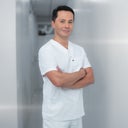This is a common question that many of my facelift patients have. I favor deep sedation to general anesthesia for facelift surgery as it gives the patient the most comfort to allow me to execute surgery and give a perfect result. I understand the allure of avoiding general anesthesia, however, with a deeper understanding of the spectrum of anesthesia, I find patients prefer this approach over other types when weighing risks and benefits.















